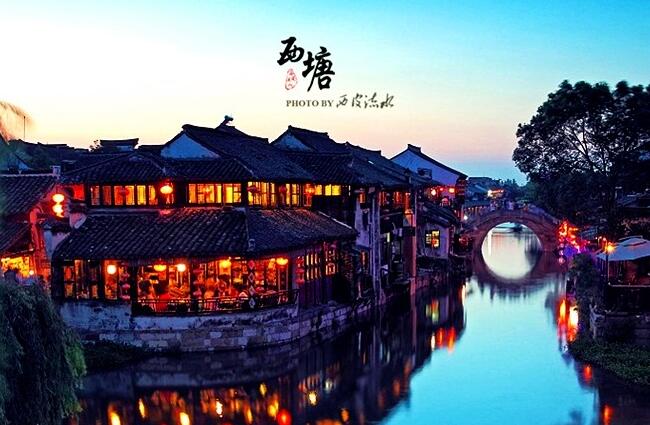Post At 2018-03-19 14:50:30
Xitang, a living ancient town with a history stretching over more than one thousand years, is a nominated world cultural heritage site, one of the first cultural heritage towns in China, a National AAAAA Tourist Attraction, and a charming water town often frequented by filmmakers. It is also a recipient of the World Heritage Outstanding Achievement Award. With its rich history, abundant cultural resources and beautiful natural sceneries, Xitang is celebrated as one of the birthplaces of ancient Wu and Yue culture.
Conveniently located in Jiashan County, Zhejiang Province, Xitang Ancient Town enjoys a superior location at the intersection of Jiangsu, Zhejiang and Shanghai. The township has a total area of 83.61 square kilometers, of which 1.01 km2 is occupied by the central area. The town has a population of 60,000 residents.
As early as the Spring and Autumn and Warring State Period (770-221 B.C.), Xitang was a place of strategic importance on the boundary between Wu and Yue States. Due to its vicinity to Mount Xu (12 km away from the current Jiashan County), Xitang was known as Xutang in ancient times. In addition, Xitang has a flat terrain and had been known as Pingchuan and Xietang. During the Tang Dynasty, a large number of settlers had built houses along the river. During the Southern Song Dynasty, the villages gradually integrated, resulting in the formation of a prosperous town during the Yuan Dynasty. Xitang then developed into a major handicraft and commercial center in South China during the Ming and Qing dynasties, earning the description of “waters of spring and autumn, town from the Tang and Song dynasties, architecture from the Ming and Qing Dynasties, modern people”.
Apart from spectacular sceneries, Xitang also takes pride in its rich cultural heritage and its remarkably talented natives. Statistics show that Xitang had produced 19 candidates for the highest imperial examination and 31 successful scholars at the provincial level, as well as 103 published authors. It is also the birthplace of Yang Mao and Zhang Cheng, lacquer masters of the Yuan Dynasty. Their outstanding works represented the peak of red lacquering technique and the highest level of craftwork from the Yuan Dynasty.
Known as the “3 wise men of Jiashan” together with Chen Yuyu and Wu Zhen, Zhou Ding had described many of Xitang’s enchanting sights in his work, “10 Scenic Poems of Pingchuan”, allowing us to visualize scenes of the beautiful ancient town. The famous playwright, former Chairman of Zhejiang Cultural Association and Dean of the Zhejiang Opera Theater, Gu Xidong had devoted his life to the creation of the Shaoxing Opera and wrote a large number of scripts, among which "Five Women's Pleasure" and "Han Gong Complaints" have been well-received.
Famed for its numerous bridges, ancient alleys and long sheltered corridors, Xitang has rich folk traditions and its unique cultural heritage is ubiquitous. Xitang Ancient Town has always maintained a harmonious relationship between man and nature. It serves as a base for experts to study the style of Jiangnan Water Villages and for artists to illustrate the beauty of Jiangnan Water Town. Tourists flock to visit the scenic spots of a typical Jiangnan Water Village and help to drive the local economy. Xitang Ancient Town attracts visitors from all over the world with its unique cultural temperament.
